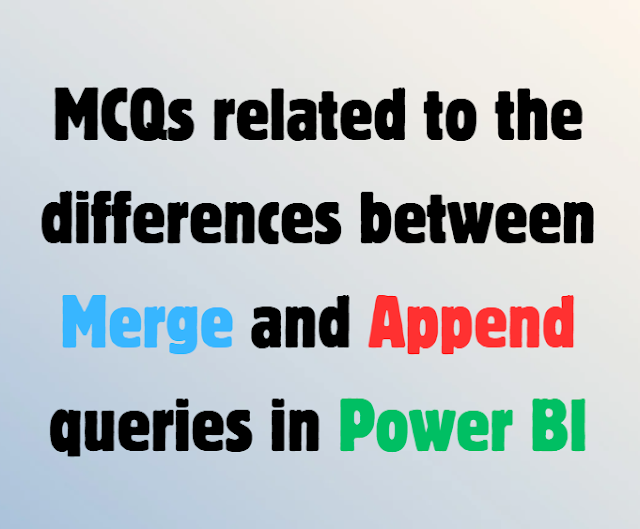MCQs related to the differences between Merge and Append queries in Power BI
1. What is the primary purpose of a Merge Query in Power BI?
A) To combine multiple tables by adding rows
B) To join tables based on a common column
C) To delete duplicate records
D) To filter data
Answer: B) To join tables based on a common column
2. Which operation in Power Query is similar to a SQL JOIN?
A) Append
B) Merge
C) Group By
D) Pivot
Answer: B) Merge
3. What happens when you Append two tables in Power Query?
A) New rows are added to one of the tables
B) Columns are combined based on a key
C) Duplicate records are removed
D) Data types are automatically changed
Answer: A) New rows are added to one of the tables
4. Which of the following is a requirement for an Append Query to work properly?
A) The tables must have a common column
B) The tables must have the same structure (columns & data types)
C) The tables must have the same number of rows
D) The tables must be sorted before appending
Answer: B) The tables must have the same structure (columns & data types)
5. If you want to add a "Customer Name" column from another table into your Sales table, which operation should you use?
A) Append
B) Merge
C) Remove Columns
D) Split Columns
Answer: B) Merge

Comments
Post a Comment